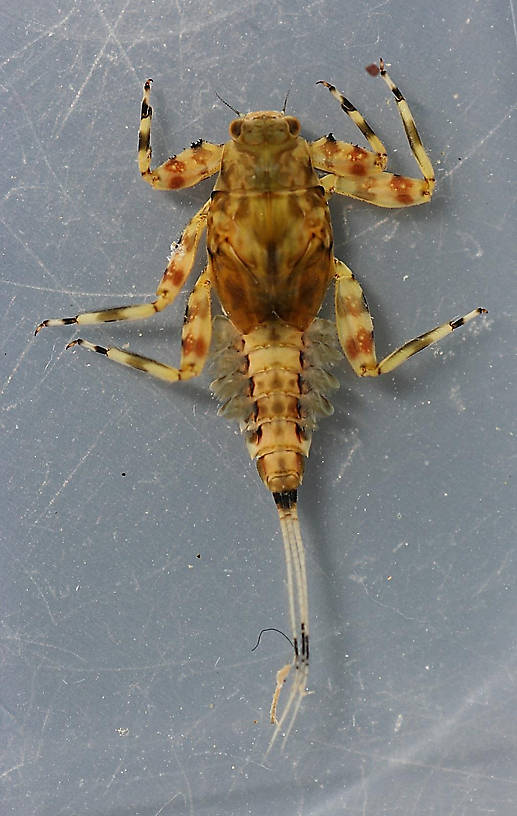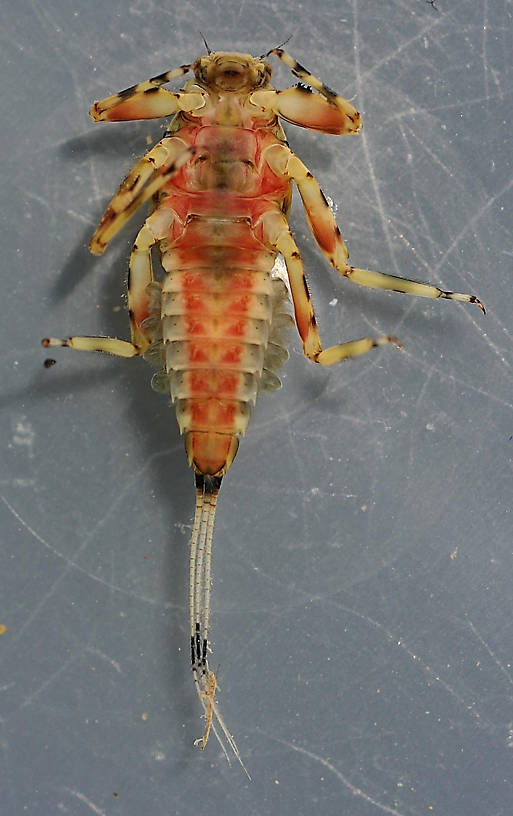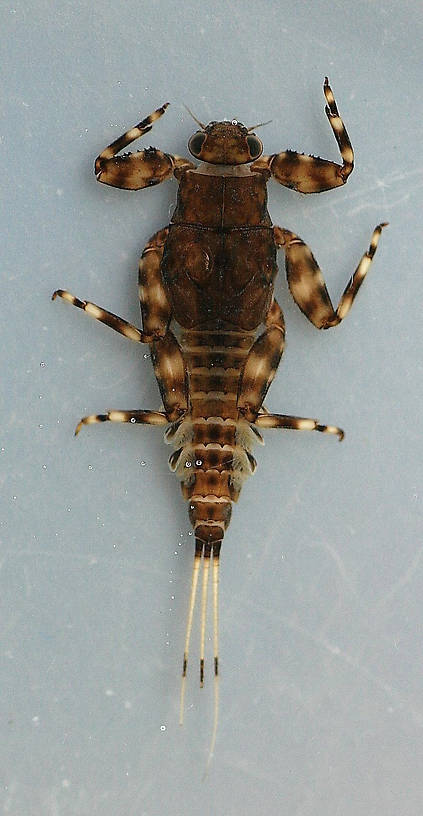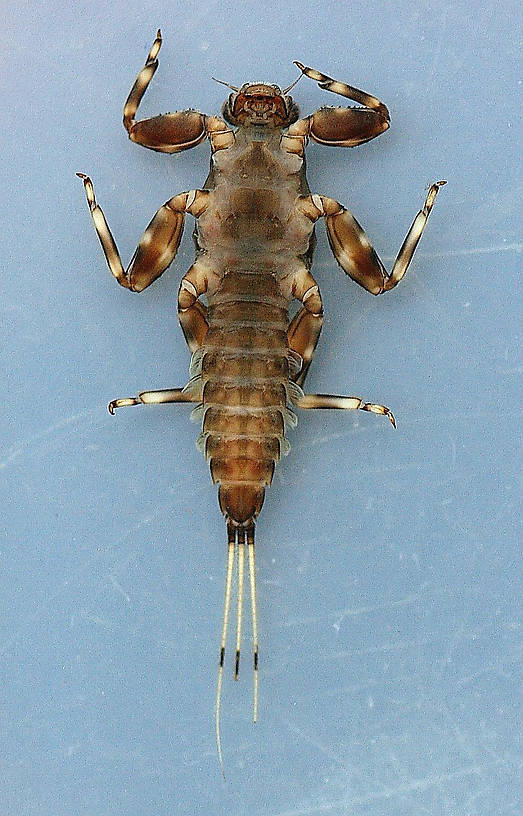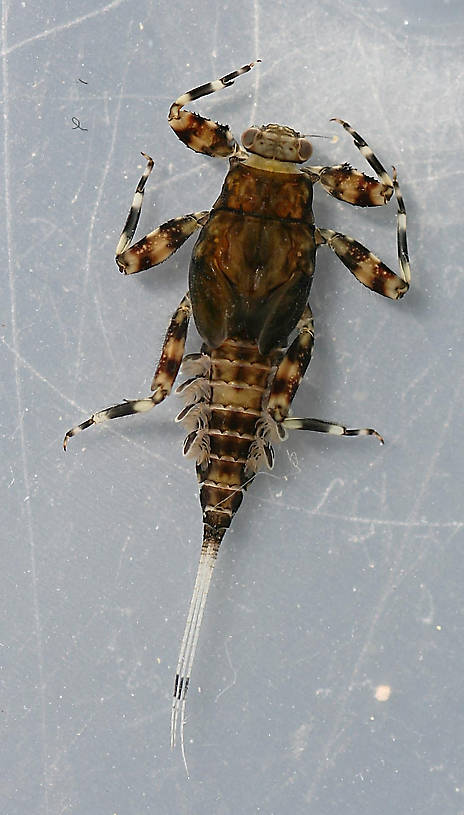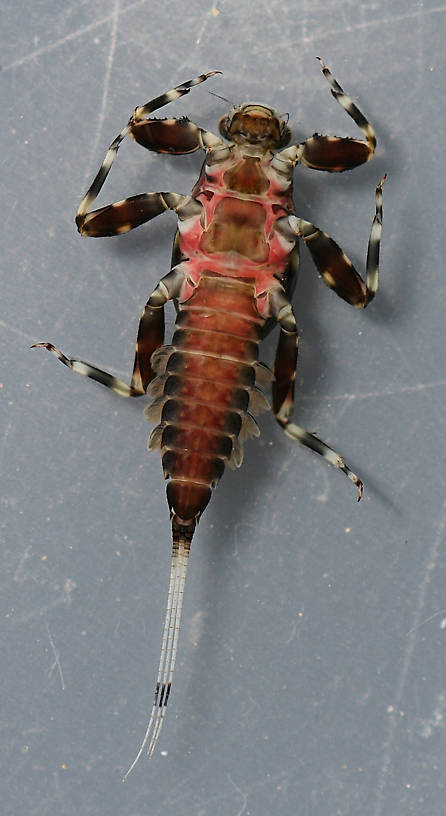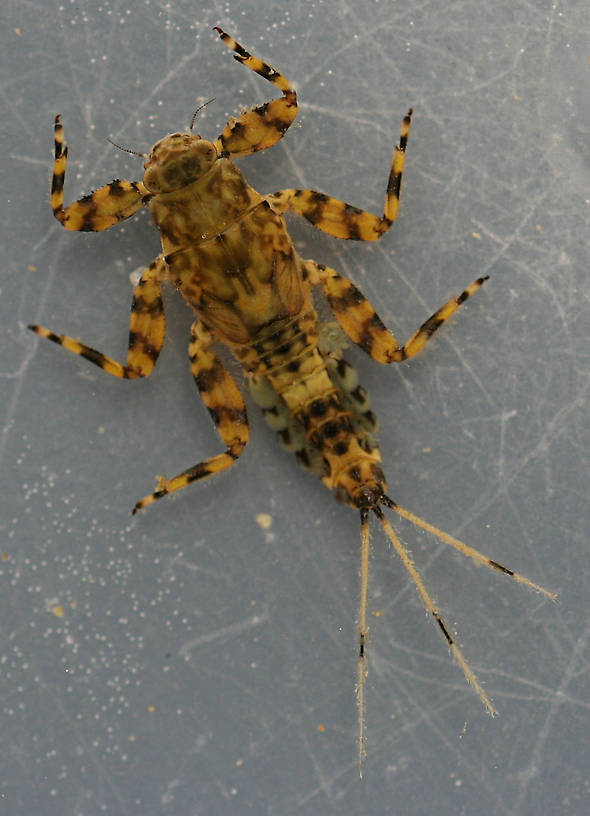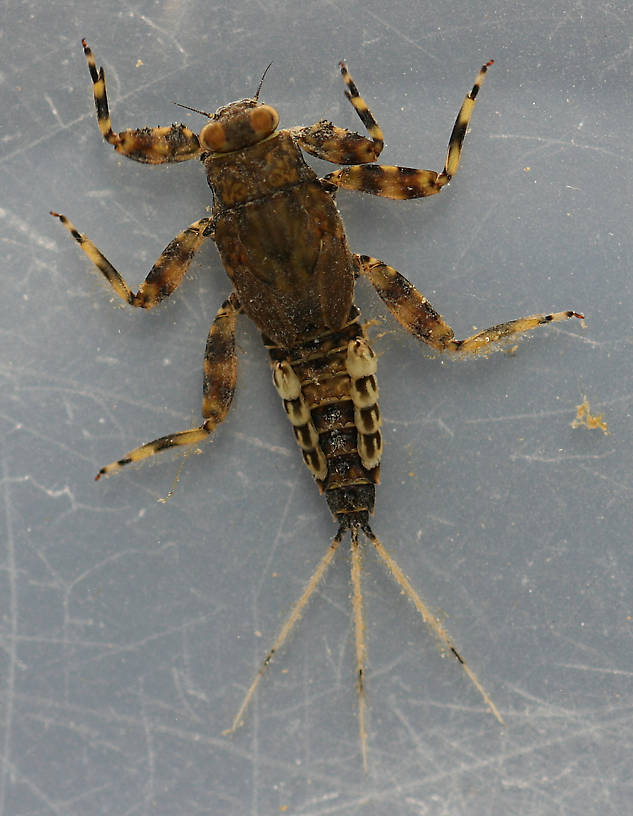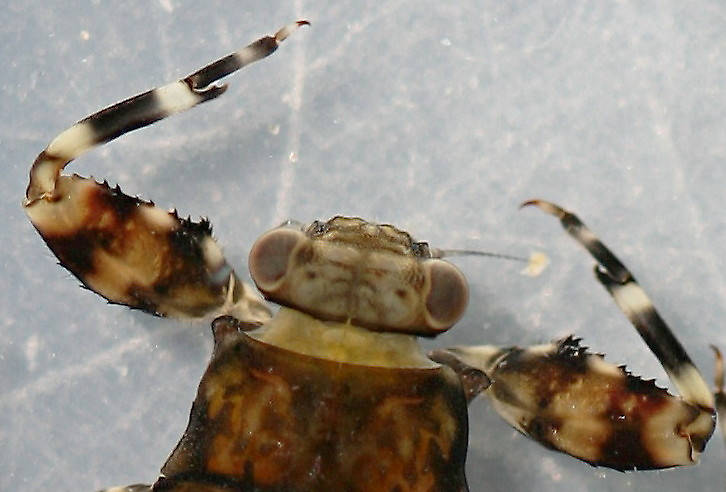Blog & Latest Updates
Fly Fishing Articles
Insects by Common Name


> > Drunella coloradensis / flavilinea
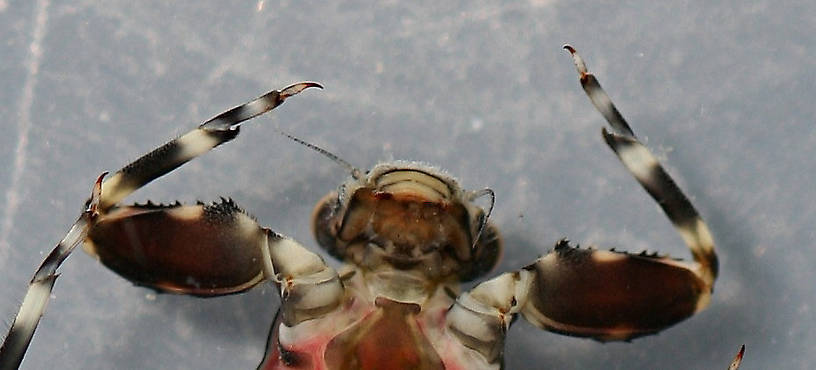
| Millcreek | July 17th, 2014, 7:21 pm | |
| Healdsburg, CA Posts: 356 | These nymphs are common in the Russian River from mid-February to late April (at least as late instars). I keep going back and forth between D.coloradensis and D. flavilinea without resolving the issue. I know a lot of folks say to just leave it at D. coloradensis / flavilinea but I thought I'd run it by the folks here and see what you have to say. Size ranges from 9-16 mm (excluding cerci). I put a fairly large number of pictures here to show the range of color variation. | |
| Entoman | July 17th, 2014, 9:15 pm | |
| Northern CA & ID Posts: 2604 | Boy you sure pick the fun ones, Mark. :) These are photos of flavilinea, at least for now... The problem for us in CA is that nymphal specimens of these guys meld characters used in the keys from both species. Your excellent photos show prime examples of this. The standard is still Allen & Edmunds '62. They mention this problem with these species in CA and I'm not aware of any later studies that resolve it. Even with this problem in mind, A & E came to the conclusion that they are flavilinea everywhere excepting the Northeastern part of the state where coloradensis holds sway. Based on that I am comfortable with calling yours flavilinea - at least until new research becomes available...;) | |
| "It's not that I find fishing so important, it's just that I find all other endeavors of Man equally unimportant... And not nearly as much fun!" Robert Traver, Anatomy of a Fisherman | ||
| Millcreek | July 17th, 2014, 11:30 pm | |
| Healdsburg, CA Posts: 356 | Hey Kurt, if I can't carry the load myself I'll hand it to someone else.:) I used A & E '62 to key the specimens out. I was going with flavilinea myself until I looked at Meyer and McCafferty's Mayflies of California (2008). While they don't list coloradensis in Sonoma County they do have them listed for Marin and Lake as well as several other counties in NW CA. The problem there is they are based on larval specimens and someone could have confused them with flavilinea. I'm still straddling the fence on this one. | |
| Entoman | July 18th, 2014, 2:11 am | |
| Northern CA & ID Posts: 2604 | Yeah, that survey has always been a bit of a puzzle to me. If the key's authors describe them as unworkable for our region, how did workers make determinations in that species survey using them? My hunch is we got us a whole lot o' intergradin' goin' on round heah! :) The grandis sub-species have a similar problem where their ranges overlap. | |
| "It's not that I find fishing so important, it's just that I find all other endeavors of Man equally unimportant... And not nearly as much fun!" Robert Traver, Anatomy of a Fisherman | ||
| Millcreek | July 21st, 2014, 4:37 pm | |
| Healdsburg, CA Posts: 356 | Took a look at the manual Luke Jacobus and compadres put together for SAFIT and am now inclined to go with Drunella flavilinea because of the broadly triangular spines (at least in relation to Drunella coloradensis). Unless of course your comment turns out to be correct. My hunch is we got us a whole lot o' intergradin' goin' on round heah! :)PC or not, it sure made me laugh. | |
| Entoman | July 21st, 2014, 8:45 pm | |
| Northern CA & ID Posts: 2604 | Well, Foghorn Leghorn aside, that was the gist of A&E's paper regarding our state. Intergrades between the two species where their ranges overlap coupled with the curious phenomenon of specimens of both becoming more spiny as their ranges move westward toward the coast renders their keys unworkable for us. Sure like to know how the later M&M paper determined that coloradensis inhabits our coastal counties. | |
| "It's not that I find fishing so important, it's just that I find all other endeavors of Man equally unimportant... And not nearly as much fun!" Robert Traver, Anatomy of a Fisherman | ||
| Millcreek | July 21st, 2014, 9:29 pm | |
| Healdsburg, CA Posts: 356 | I suspect that another quote, one from Cool Hand Luke might sum it up. The warden of the chain gang when he addresses the convicts, "What we have here is a failure to communicate." | |
| Entoman | July 21st, 2014, 10:27 pm | |
| Northern CA & ID Posts: 2604 | :) | |
| "It's not that I find fishing so important, it's just that I find all other endeavors of Man equally unimportant... And not nearly as much fun!" Robert Traver, Anatomy of a Fisherman | ||
| PaulRoberts | July 22nd, 2014, 5:00 am | |
| Colorado Posts: 1776 | Nice discussion guys. Thanks. | |
| Crepuscular | July 22nd, 2014, 9:25 am | |
| Boiling Springs, PA Posts: 923 | Well, Foghorn Leghorn aside, that was the gist of A&E's paper regarding our state. Intergrades between the two species where their ranges overlap coupled with the curious phenomenon of specimens of both becoming more spiny as their ranges move westward toward the coast renders their keys unworkable for us. Sure like to know how the later M&M paper determined that coloradensis inhabits our coastal counties. What? Variation among the Ephemerellids, no way... | |
Quick Reply
You have to be logged in to post on the forum. It's this easy:
Related Discussions
| Title | Replies | Last Reply |
| Re: Chloroperlidae In Isoperla Stonefly Adult by Teamrenna | 3 | Sep 9, 2008 by GONZO |
| Re: flav In General Discussion by Lastchance | 6 | Jan 17, 2012 by Doublespey |
| Re: Caddisfly adult ID In the Insect Order Trichoptera by Dryfly | 3 | Dec 19, 2009 by Creno |
| Re: Hecuba In General Discussion by Sayfu | 12 | Aug 14, 2012 by Sayfu |
| Re: From tying to identifying In the Identify This! Board by Jman | 2 | Jun 6, 2008 by Jman |
| Re: Anyone know your western Drunella species? In Female Drunella doddsii Mayfly Dun by Troutnut | 23 | Apr 12, 2012 by Entoman |
| Re: Insect Identification Caddisfly In the Identify This! Board by Dkuhn | 10 | Oct 1, 2008 by Creno |
| Help with Pteronarcys species characters? In Pteronarcys biloba Stonefly Nymph by GONZO | 0 | |
| Re: Mayfly Workshop: 3-5 Jan, 2013; LongBeach, CA, USA In General Discussion by Konchu | 2 | Nov 28, 2012 by Brookyman |
| Re: Small Sulphurs In Male Ephemerella dorothea dorothea Mayfly Dun by GONZO | 3 | Jul 22, 2014 by Entoman |
Troutnut.com is copyright © 2004-2024 Jason
Neuswanger (email Jason). See my FAQ for information about use of my images.
 privacy policy
privacy policy

